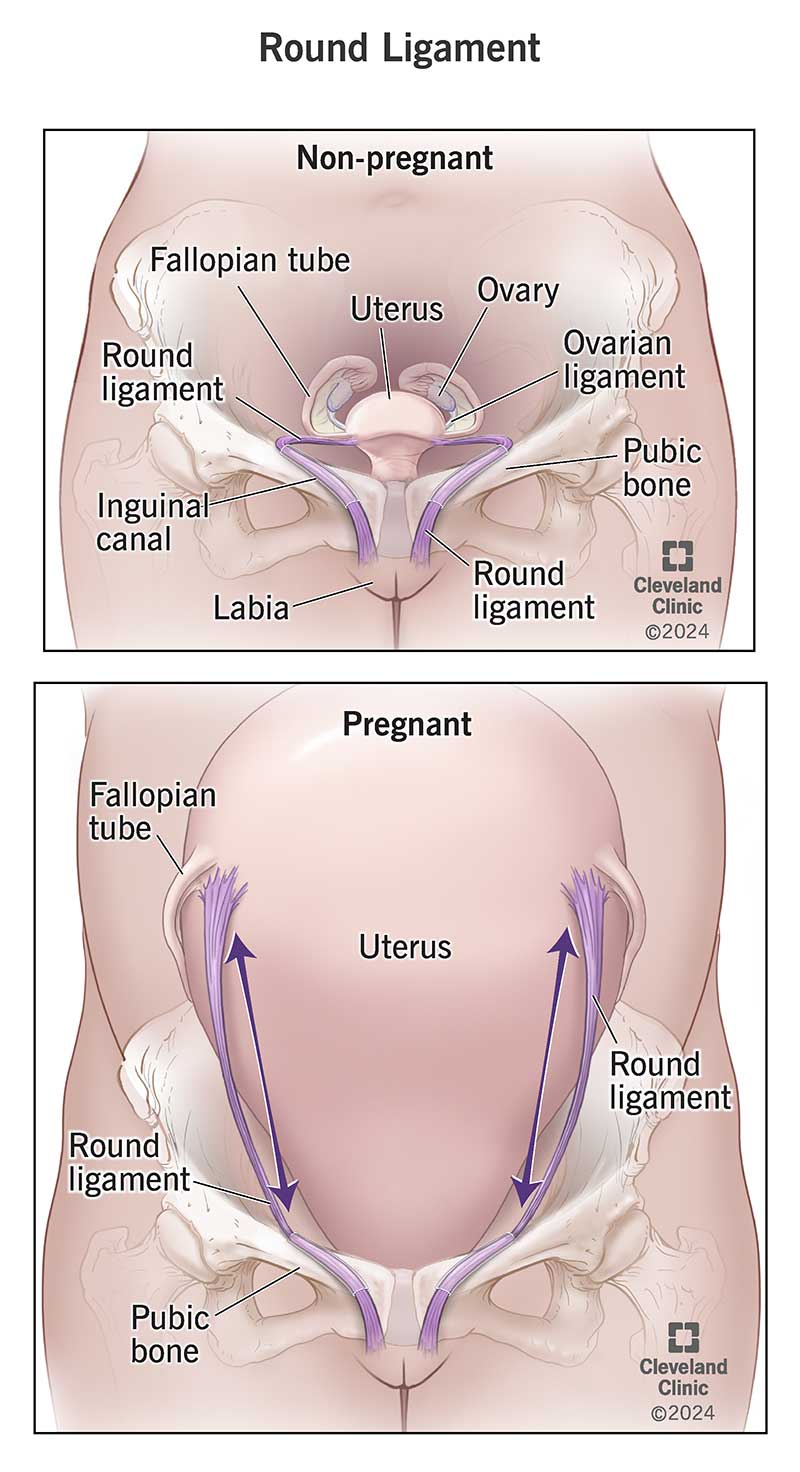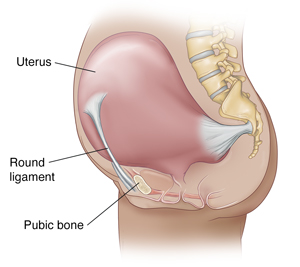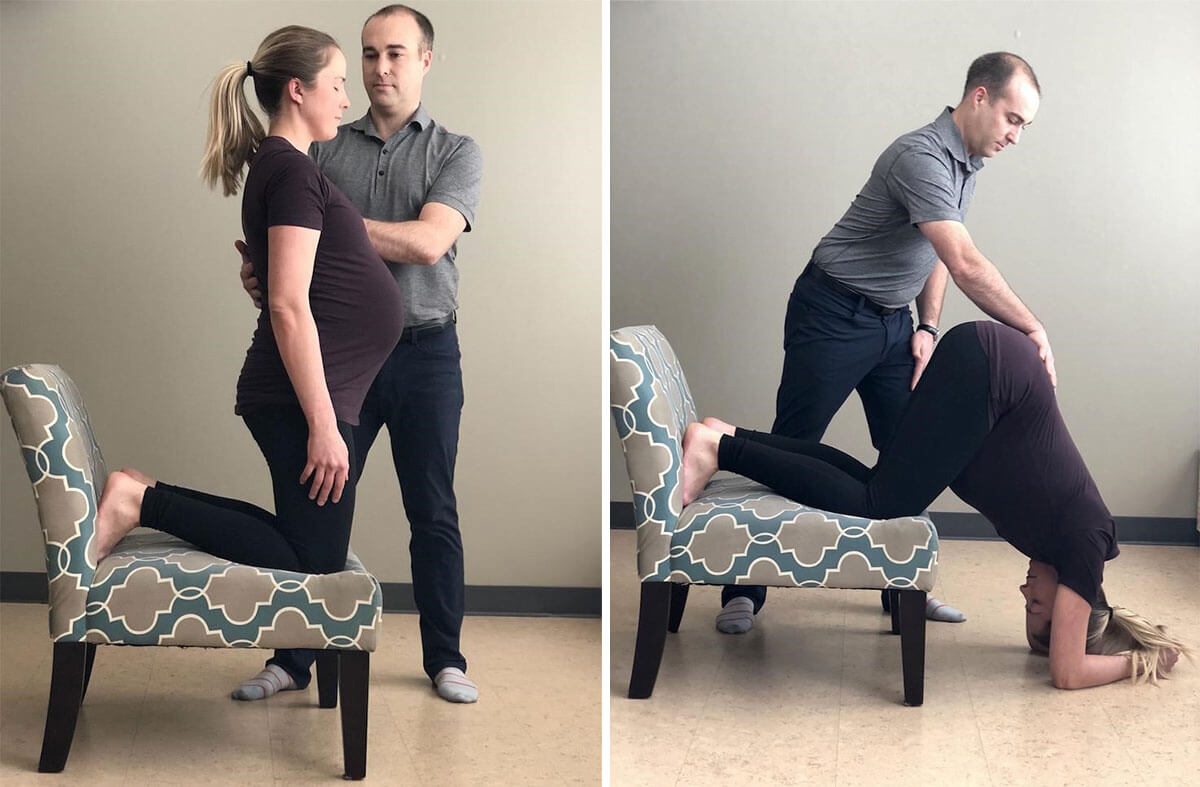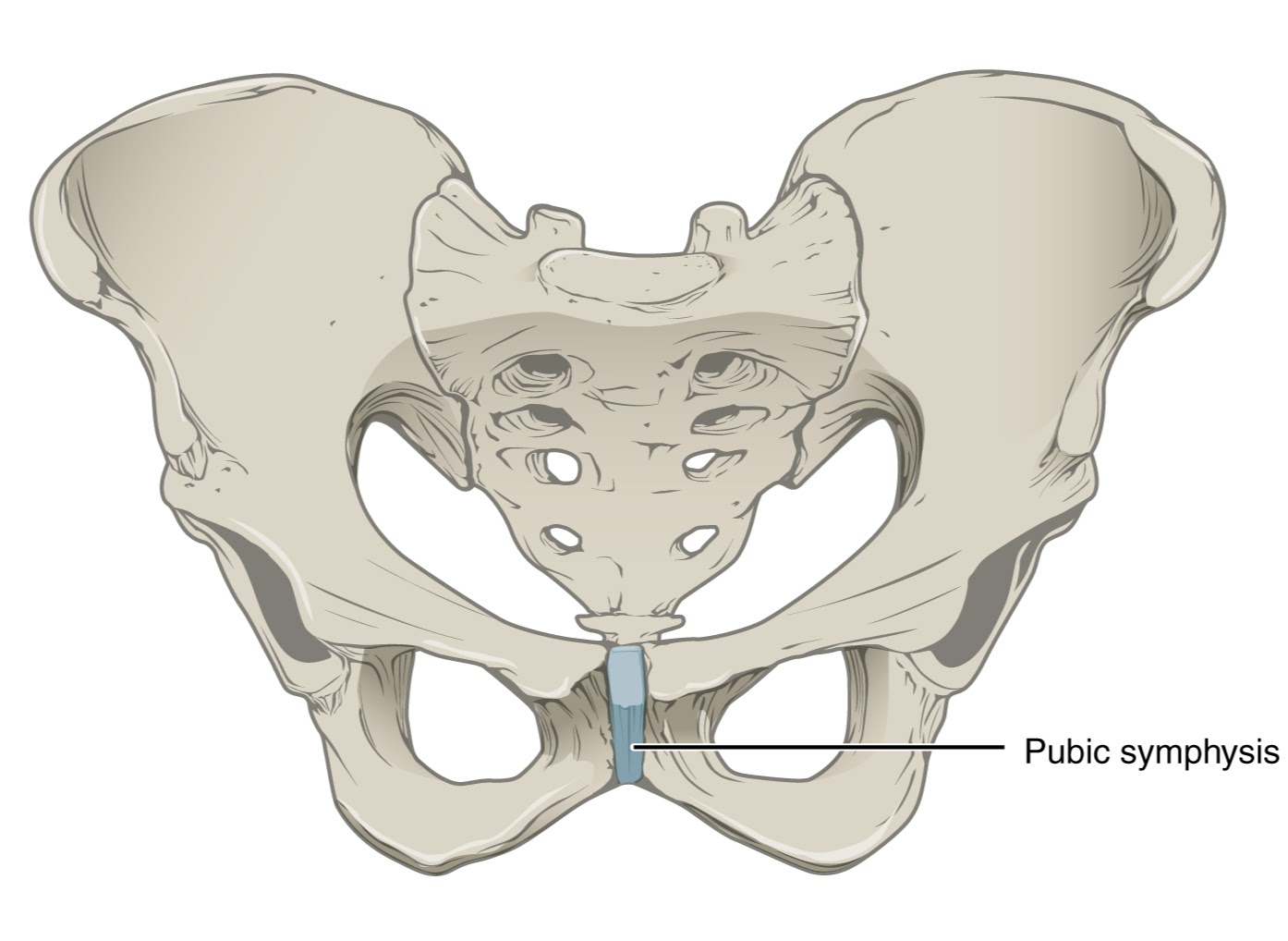Back
Pelvic Pain During Pregnancy: Round Ligament and Pubic Symphysis Pain
By Shannon Strauch, PTA, STMT-1 on 9/10/2024

Understanding Round Ligament Pain and Pubic Symphysis Pain During Pregnancy
Pregnancy brings many changes, especially to the pelvis, which must accommodate the growing baby. Among the common discomforts are
round ligament pain
andpubic symphysis pain
, both of which can significantly affect a woman’s daily activities and overall comfort. However, understanding these conditions and using pelvic floor therapy and targeted exercises can offer relief.Round Ligament Pain: What Is It and Why Does It Happen?


The
round ligaments
are bands of connective tissue that connect the uterus to the groin region, helping to support the uterus as it grows during pregnancy.Location of Pain:
Round ligament pain is usually felt on one or both sides of the lower abdomen. It often radiates down to the groin area and can sometimes be sharp or stabbing, particularly when moving suddenly (like standing up quickly or rolling over in bed).Why It Happens:
During pregnancy, the growing uterus causes these ligaments to stretch and become taut. This stretching creates tension, and since the ligaments are quite sensitive, they can become painful when overstretched. Rapid movements that pull on these ligaments can also result in sudden, sharp pain.Triggers:
Round ligament pain is often triggered by movements that involve a change in position, such as coughing, sneezing, or quick movements like standing up from sitting.
How to Treat Round Ligament Pain with Pelvic Floor Therapy
Pelvic floor therapy is highly effective for managing round ligament pain by helping pregnant women achieve proper pelvic alignment and flexibility.
Pelvic Alignment:
A pelvic floor therapist will assess and correct any misalignment of the pelvis or sacrum that might be contributing to round ligament pain. When your pelvis is better aligned, the tension on the round ligaments decreases.Breathing Techniques:
Focused breathing techniques can reduce tension in the abdominal and pelvic areas, alleviating strain on the round ligaments.Gentle Stretching Exercises:
Pelvic tilts:
These can help release tension in the round ligaments. Perform pelvic tilts by lying on your back with knees bent, feet flat on the floor. Slowly tilt your pelvis up and down, engaging the abdominal muscles as you do.
Forward Leaning or Forward Inversion Stretch:
Lean forward on a wall, chair, ball to reduce tension on the uterus and reset the ligaments. For a more intense stretch, sit on the end of a couch and place forearms on the floor for a forward inversion stretch. Forward Inversion Stretch

Hip flexor stretches:
Stretching the hip flexors (the muscles in the front of your hips) can help relieve the pull on the ligaments. This is best done in a controlled manner, such as with a supported lunge stretch.
Strengthening the Pelvic Floor:
Strengthening the muscles that support the pelvic organs can reduce strain on the ligaments. Kegel exercises, where you contract and relax the pelvic floor muscles, are beneficial for maintaining pelvic stability throughout pregnancy.
Pubic Symphysis Pain (SPD): What Is It and Why Does It Happen?
Pubic Symphysis Pain
(also known asSymphysis Pubis Dysfunction
, or SPD) is caused by increased movement or instability in the pelvic joint, specifically at thepubic symphysis
, which is the joint where the two halves of the pelvis meet in the front.
Location of Pain:
The pain is located in the front of the pelvis at the pubic bone. It may radiate to the inner thighs, lower abdomen, lower back, hips, or even down the legs. Some women describe a clicking or grinding sensation in the pelvis when walking.Why It Happens:
The hormonerelaxin
, produced during pregnancy, helps to loosen ligaments and joints to prepare the body for childbirth. However, this loosening can lead to instability in the pubic symphysis joint, causing it to shift abnormally. This shifting is what leads to pain and discomfort.Triggers:
Walking, standing on one leg, rolling over in bed, climbing stairs, and even getting dressed can exacerbate the pain, as these activities place more strain on the pubic symphysis.
How to Treat Pubic Symphysis Pain with Pelvic Floor Therapy
Pelvic floor therapy is extremely helpful for relieving SPD by focusing on stabilizing the pelvis and reducing excessive movement in the joints.
Pelvic Stabilization Techniques:
A therapist will help teach techniques to stabilize the pelvis, such as using a
pelvic support belt, which can reduce strain on the pubic symphysis
Strengthening Pelvic Floor and Core Muscles:
Pelvic floor exercises (such as Kegels) and strengthening exercises for the transverse abdominis (deep abdominal muscles) help provide support for the pelvic joints.
Exercises that target the glutes and hip stabilizers also help distribute weight evenly across the pelvis, reducing strain on the pubic symphysis
Safe Exercises for SPD:
Bridge exercise:
Lying on your back with knees bent and feet flat on the ground, lift your hips while engaging the pelvic floor and glutes, then slowly lower them back down. This strengthens the pelvic and gluteal muscles, providing extra support to the pelvis.
Modified squats:
Stand with your feet wider than shoulder-width apart, gently squat while keeping the pelvic floor engaged. Ensure the movement is slow and controlled.
Clamshell exercise:
Lying on your side, with knees bent, lift the top knee while keeping the feet together. This strengthens the muscles around the hips and pelvis, promoting stability.
Postural Adjustments:
Correcting posture by keeping the spine in a neutral position and avoiding movements that overstretch or destabilize the pelvis can reduce symptoms.
The Role of Pelvic Floor Therapy in Pregnancy: Why It’s Beneficial
Pelvic floor therapy offers a holistic approach to managing pain during pregnancy, ensuring the pelvis is well-aligned, the muscles are strong, and ligaments are supported. Here are a few specific benefits:
Prevention of Pain Progression:
Addressing round ligament pain and SPD early through pelvic floor therapy can prevent the conditions from worsening as pregnancy progresses.
Improved Mobility:
Exercises and alignment work help improve mobility and reduce discomfort during everyday activities like walking or getting up from a seated position.
Postpartum Recovery:
Strengthening the pelvic floor and maintaining proper alignment during pregnancy lays the foundation for a smoother postpartum recovery.
Conclusion: Managing Pregnancy Discomfort with Pelvic Floor Therapy
Round ligament pain and pubic symphysis pain are common, but they don’t have to define your pregnancy experience. Pelvic floor therapy and targeted exercises can offer relief by promoting pelvic stability, reducing strain on ligaments, and strengthening the muscles that support your growing body. By working with a pelvic floor therapist, you can reduce pain, improve your mobility, and support a healthier, more comfortable pregnancy. Looking to optimize your pregnancy journey with pelvic floor physical therapy? Reach out to us at Pelvic Health Center in Madison, NJ to set up an evaluation and treatment! Feel free to call us at 908-443-9880 or email us at receptionmadison@pelvichealthnj.com.
Read More:
How Chronic Pelvic Congestion in Men Contributes to Prostatitis By Shannon Strauch, PTA, STMT-1 on 12/11/2024 How lymphatic issues can cause symptoms of prostatitis Prostatitis and Tight Pelvic Floor Muscles: A Comprehensive Guide By Shannon Strauch, PTA, STMT-1 on 12/10/2024 How a tight pelvic floor can be the reason for prostatitis symptoms
Are you ready to live pain free?
Request An Appointment